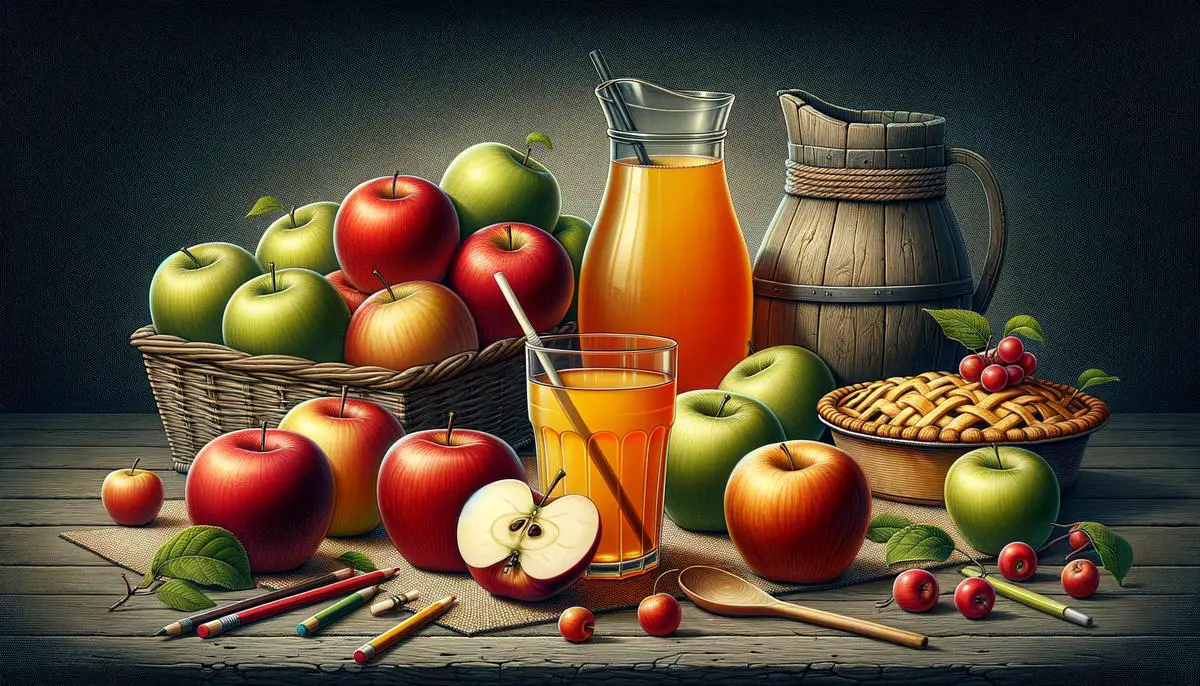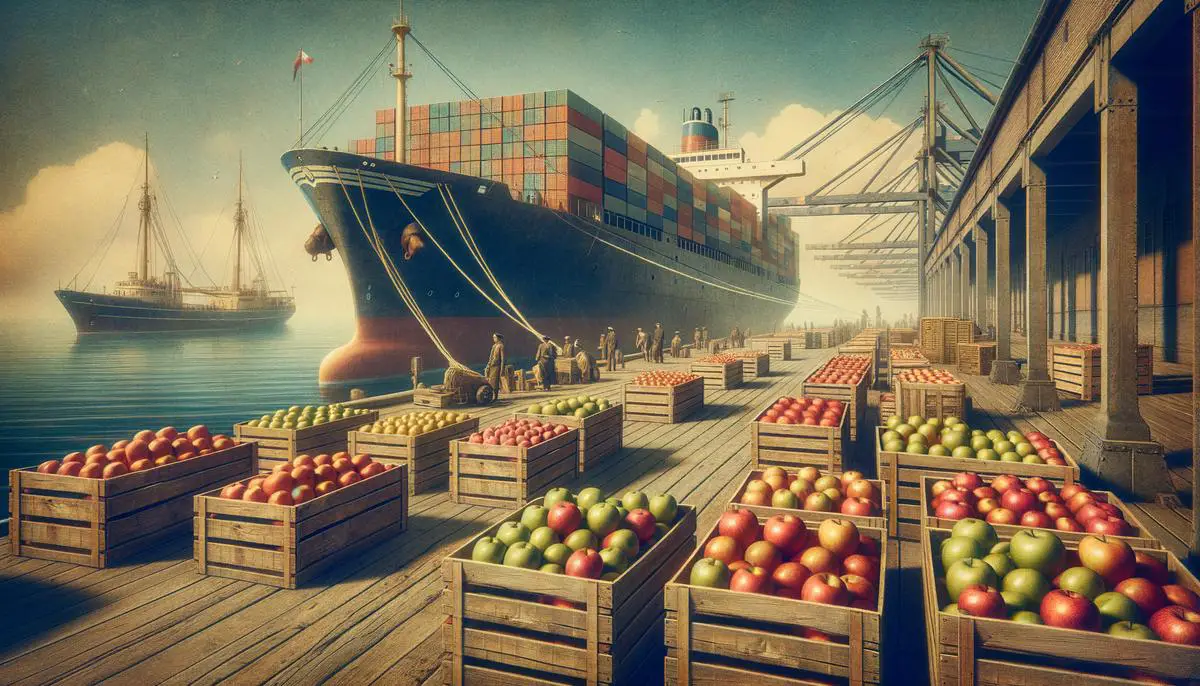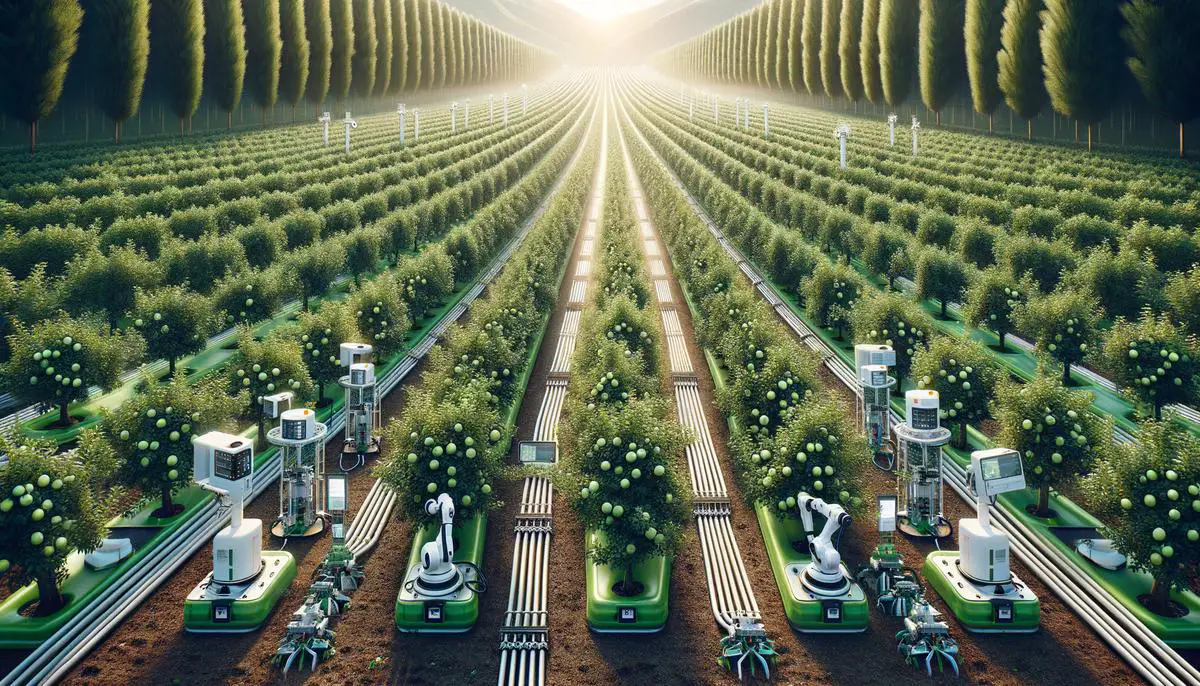In recent years, the apple market has seen a notable shift in consumer behavior. Health-conscious individuals are increasingly turning to apples as a go-to snack, driven by their nutritional benefits and the desire for natural food options. This trend is not just about eating healthier; it's about making informed choices that align with broader lifestyle changes.

Market Dynamics and Key Drivers
In examining the apple market, we note a surge in wellbeing-focused consumption. People worldwide are munching on apples like never before, driven by growing health awareness and a pandemic-induced rush to bolster immune defenses. With the onset of COVID-19, apples gained a sort of superhero status. Consumers, jittery about their health, reached for anything promising an immunity boost.
The organic apple trend isn't just a passing fad. It's here to stay, poised to grow at a higher CAGR during the forecast period. High-income folks in the U.S. and Europe are willing to pay extra for naturally grown apples—a trend that's flipping regular apple yields on their head.
Key Market Players:
- China: Devours nearly half of global production
- United States: Thriving organic apple sector
- European countries: Significant consumers
Urban farming and organic apple cultivation are reshaping market dynamics. The advent of urban agriculture, transforming community spaces like school farms and parking lots, is creating a new landscape where every rooftop could harbor a small orchard.
The beverage and food industries are major players too, using apple supplies for various products. This demand underscores the fruit's versatility and appeal.
Challenges:
- Climate change impacts
- Fluctuating production levels
- Adverse weather conditions affecting yield
New breeds like Honeycrisp and Cosmic Crisp are offering a buffet of flavors and textures. Consumers' growing preference for fresh, organic, and diverse varieties means the market is always bustling with activity.

Market Segmentation Analysis
Let's slice into the market segmentation! Variety isn't just the spice of life; it's the essence of the marketplace. We're talking about a rainbow of flavors and uses that cater to diverse tastes and needs.
Types:
- Honeycrisp: Hot commodity in North America
- Fuji: Fan favorite worldwide
- Cosmic Crisp: Rising star with stellar shelf life
Nature:
- Regular
- Organic: Growing demand, especially in U.S. and Europe
End-use:
- Food Industry: From classic pies to trendy salads
- Beverage Industry: Ciders, juices, and smoothies
- Medicinal Uses: Health supplements and products
The apple market, like a well-pruned orchard, is flourishing with distinct segments catering to varied consumer preferences. Whether it's savoring a crisp Fuji, sipping an organic apple cider, or integrating apples into a health regimen, the market is ripe with opportunities and growth.

Regional Market Analysis
The Asia-Pacific region is practically hogging the apple buffet, accounting for a hefty 62% of the global market. Leading the charge? None other than China. With a consumption rate of 40 million metric tons, China's munching through apples like there's no tomorrow. It's not just about quantity; it's a cultural thing. Apples have deep roots in Chinese traditions and everyday diet.
China's apple affluence extends beyond its borders too. The sheer scale of production and consumption in China sends ripples through the global market, influencing apple prices and global trade patterns.
In Europe, apples hold a storied place, almost like culinary royalty. The European Union forms a significant apple consumer bloc, with countries like Germany, France, and Poland playing key roles. With over 7,500 apple cultivars, Europe's rich varietal diversity is impressive. They don't just stick to the classics; the old and the new coalesce, creating a dynamic market that's both traditional and avant-garde.
Europeans, much like their American counterparts, are riding the organic wave. Apples managed under certified organic systems are becoming increasingly popular, particularly in the high-income groups.
The United States is no slouch in the apple arena either. Washington state is the apple darling of America, producing more apples than any other state. The apple sector here, despite facing a general decline in production, is seeing a vibrant organic segment that's climbing the charts. Popular varieties like Honeycrisp and Gala have carved out a niche that appeals to a wide demographic.
Key Players by Region:
| Region | Key Players |
|---|---|
| China | Zhejiang Huasheng Fruit Co. |
| Europe | T&G Global, Agrícola Famosa |
| U.S. | Washington Fruit & Produce Co., Stemilt Growers, FirstFruits Farms |
These companies not only produce staggering quantities of apples but are also at the forefront of innovation, from adopting sustainable farming practices to developing new, irresistible apple varieties.

Competitive Landscape
Buckle up, apple aficionados, because it's time to dive into the juicy world of the competitive landscape! This part peels back the layers on the titans of the apple industry.
- Washington Fruit & Produce Co.: Synonymous with quality, innovating in precision agriculture and ultra-modern storage systems.
- Stemilt Growers: Market positioning as the go-to for organic apples, catering to growing consumer obsession.
- FirstFruits Farms: Community-centric approach, celebrated for their "Opal Apple Youth Make a Difference Initiative".
- T&G Global: Dominates with Red Envy and Jazz apple varieties, focusing on aggressive international expansion.
- Zhejiang Huasheng Fruit Co.: Representing China's might, maximizing yield while ensuring top-notch quality.
- Agrícola Famosa: Brazilian powerhouse adopting advanced irrigation and climate control technologies.
Challenges facing the industry giants:
- Climate change: Turning predictable growing seasons into a whimsical roller coaster.
- Market fluctuations: Prices swinging wildly due to varying global production levels.
- Pest and disease threats: Pushing companies to continuously innovate in pest management and crop protection.
The landscape is rife with competition, innovation, and a few prickly challenges. But the key players, with their strategic savvy and relentless pursuit of consumer delight, are more than up to the task.

- Food and Agriculture Organization of the United Nations. World Food and Agriculture Statistical Yearbook 2021. Rome: FAO; 2021.
- Bramlage WJ. Apples. In: Gross KC, Wang CY, Saltveit M, eds. The Commercial Storage of Fruits, Vegetables, and Florist and Nursery Stocks. Agriculture Handbook 66. Washington, DC: USDA; 2016.
- United States Department of Agriculture. Noncitrus Fruits and Nuts 2020 Summary. Washington, DC: National Agricultural Statistics Service; 2021.
- European Commission. Agricultural Markets Brief: Apples. Brussels: EC; 2020.
- World Apple and Pear Association. World Apple Review. Mechelen: WAPA; 2021.